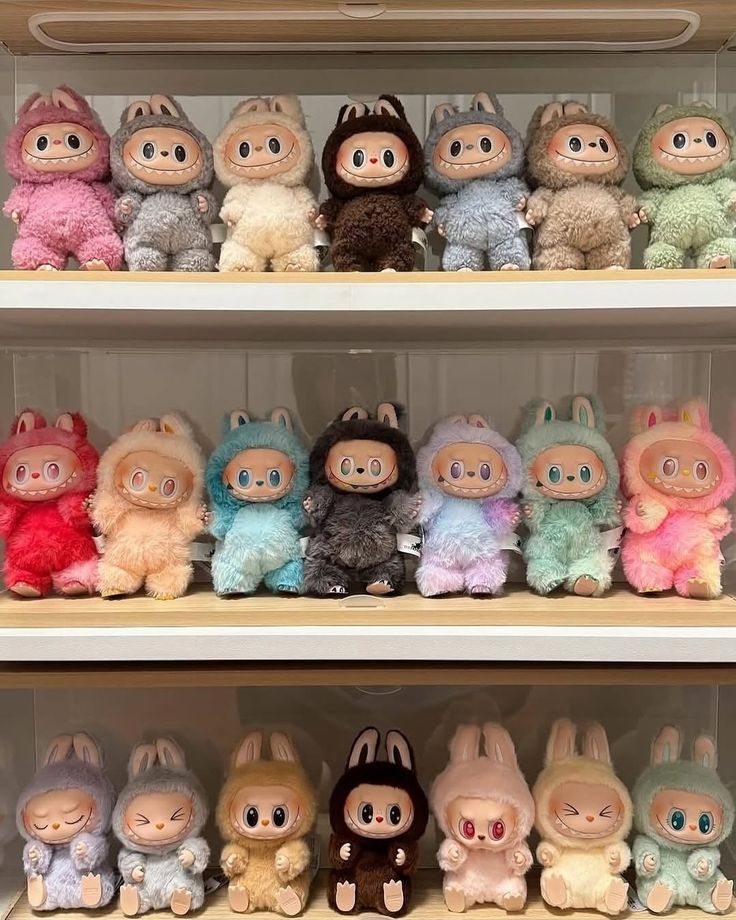
Pop Art Labubu: What Parents Need to Know About This Cultural Craze
July 22, 2025
4 min read
Pop Art Labubu has become a global phenomenon, captivating children and adults alike with its whimsical, colorful characters and quirky designs. Parents may notice their children gravitating toward merchandise, animations, or collectibles featuring Labubu and wonder: What is this trend all about? While it may seem like just another passing fad, Pop Art Labubu has deeper cultural roots and both benefits and risks for young audiences. Here’s what parents need to know.
What Is Pop Art Labubu?
Labubu is a character born out of the imaginative world of Pop Art, created by collectible toy designers Kasing Lung and his partner at How2Work. Labubu is a mischievous, big-toothed little creature that draws inspiration from fairy tales, folklore, and surrealism. It is part of the broader designer toy movement, where art, culture, and collectible design intersect.
Labubu and its associated merchandise—vinyl figurines, limited-edition art pieces, and collaborations with brands—are vibrant, playful, and filled with storytelling elements. Children are drawn to the bold colors, quirky characters, and imaginative worlds depicted in Labubu’s designs.
The Appeal for Children
- Visual Stimulation: Labubu’s bright, exaggerated designs stimulate children’s imaginations and encourage them to dream up their own stories and adventures.
- Collectibility: Many children enjoy collecting Labubu figurines, which fosters a sense of ownership and pride. The thrill of acquiring limited-edition pieces adds excitement.
- Creativity and Art Appreciation: Pop Art Labubu connects children to the world of art in an accessible way. It introduces them to non-traditional forms of creativity and design.
- Social Connection: Fans of Labubu often bond over their shared love for the character, whether through online communities or in-person events like toy fairs and exhibitions.
Benefits of Pop Art Labubu for Children
- Encourages Artistic Exploration: Labubu’s designs can inspire children to engage in drawing, painting, or crafting their own characters.
- Boosts Imagination: The whimsical world of Labubu encourages storytelling and imaginative play, which are essential for cognitive development.
- Introduction to Design Culture: Labubu exposes children to the concept of designer art toys and the intersection of art and commerce, broadening their cultural awareness.
- Teaches Collecting Skills: Maintaining a collection can teach children about organization, patience, and goal-setting.
Risks of Pop Art Labubu for Children
- Consumerism and Materialism:
One of the most significant concerns about Pop Art Labubu is the potential to instill consumerist values in children. The nature of designer toys, especially those marketed as limited edition, can create a culture of “wanting more.” Children may begin to associate happiness, success, or social status with acquiring material objects rather than valuing creativity, kindness, or personal achievements.
This focus on possessions can negatively impact a child’s value system by:
- Encouraging a “must-have” mentality rather than contentment with what they already own.
- Leading to comparisons with peers, fostering feelings of inadequacy if they do not have the latest or rarest collectibles.
- Reducing the emphasis on intrinsic qualities like creativity, generosity, or cooperation, in favor of external markers of worth.
- Expense and Financial Pressure: Designer toys like Labubu are often expensive due to their exclusivity, and children may pressure parents to spend more than they can afford. This can lead to financial strain within families or set unrealistic expectations regarding spending.
- Screen Time and Digital Overload: Many Labubu-related activities, such as watching animations or browsing online marketplaces, can increase screen time if not managed carefully.
- Overexposure to Adult Themes: While Labubu is generally child-friendly, it is rooted in contemporary art culture, which occasionally includes themes or humor that may not be suitable for younger audiences.
Combating Consumerism: Tips for Parents
For Children
- Teach Mindful Consumption: Help children understand the difference between wants and needs. Encourage them to ask, “Do I really need this?” before making a purchase.
- Focus on Experiences, Not Things: Instead of buying every new collectible, create experiences with your child, such as drawing their own version of Labubu or visiting art exhibits together.
- Set Spending Limits: Establish a clear budget for toys and collectibles. This helps children learn the value of money and reduces the risk of overspending.
- Encourage Gratitude: Regularly talk to your child about being grateful for what they already have, fostering appreciation for non-material aspects of life.
For Parents: Modeling Good Spending Habits
Children often mimic the behavior they see in their parents. If parents themselves struggle with impulsive spending or excessive consumerism, it can reinforce these tendencies in their children. Here’s how parents can model healthy spending habits:
- Practice Mindful Spending: Before making a purchase, ask yourself:
- Do I need this, or do I just want it?
- How will this benefit me or my family in the long term?
By being intentional, you set an example for your child to think critically about their own spending.
- Limit Impulse Purchases: Avoid making frequent, unplanned purchases, especially in front of your child. Instead, discuss the importance of saving and planning before buying.
- Focus on Non-Material Rewards: Shift the focus from material possessions to experiences. Celebrate milestones with family outings, creative projects, or quality time instead of expensive gifts.
- Create a Family Budget: Involve your children in simple budgeting activities. For example, you can explain how the family plans monthly expenses and saves for special treats or trips. This helps them understand financial priorities.
- Discuss the Value of Saving: Share your own saving goals with your child, such as saving for a vacation or a home improvement project. This demonstrates the importance of delayed gratification.
- Be Honest About Financial Constraints: If your child asks for something expensive, explain why it may not be feasible at the moment. This teaches them to respect financial boundaries.
- Declutter Together: Go through unnecessary items in your home and donate or sell them. This activity can help children understand the consequences of overconsumption and appreciate the value of minimalism.
Final Thoughts
Pop Art Labubu is more than just a trend—it’s a cultural movement that offers children an entry point into the worlds of art, imagination, and creativity. However, like any cultural phenomenon, it comes with its challenges, particularly the potential to reinforce consumerist tendencies in both children and parents.
By modeling good spending habits and fostering a balanced approach to consumerism, parents can help their children navigate Labubu culture thoughtfully. Through mindful consumption, gratitude, and a focus on creativity over possessions, families can enjoy the benefits of Labubu culture while instilling values that prioritize relationships, experiences, and self-expression over materialism.
Ultimately, embracing these principles can not only enrich your child’s experience with Labubu but also help them develop a healthy, well-rounded perspective on life.





